 Summary
Summary
Despite a few minor complaints, the F10 represents an astonishing achievement. Highly recommended.
| UK Street Price | £225.00 |
| UK Online Price | |
| US Online Price | |
Full Review
It may have won the accolade of European Camera of the Year, but it has to be said that the first impressions of Fujifilm’s compact F10 camera are distinctly underwhelming.
With a clunky, chunky form factor suggesting that the product designer was off sick for the day coupled with a limited set of exposure controls, the F10 looks unlikely to impress holidaying snappers or the tripod-touting cognoscenti.
But lurking inside its bland, all-metal exterior is an astonishing point’n’shoot camera with unique features capable of producing incredible results.
 The camera is the first of a new generation of Fuji cameras sporting the new Super CCD HR sensor which – unlike previous models – doesn’t rely on interpolation jiggerypokery to deliver its 6.3 megapixel output.
The camera is the first of a new generation of Fuji cameras sporting the new Super CCD HR sensor which – unlike previous models – doesn’t rely on interpolation jiggerypokery to deliver its 6.3 megapixel output.
A newly developed ‘Real Photo Processor’ serves up an impressively wide ISO sensitivity range, starting from 80 ISO all the way up to 1600 ISO, allowing flash-free, low light shots and less chance of camera blur.
It’s a snappy performer too, with an ultra nippy start-up time backed up by a claimed 0.01 second shutter lag.
 We can’t count as fast as that, but it certainly proved to be one of the fastest compacts we’ve tested to date, with no perceivable delay after pressing the shutter button.
We can’t count as fast as that, but it certainly proved to be one of the fastest compacts we’ve tested to date, with no perceivable delay after pressing the shutter button.
The camera comes with a 3x optical zoom lens (f2.8 – f5.0 36mm – 108mm, 35mm equiv.) and a large and bright 2.5-inch 115k LCD.
In tests, we found the LCD easy to read in all but the brightest of sunlight although an optical viewfinder would have been a useful addition.
 A handy LCD brightness boost switch helped compose shots in dim light, although we found it prudent to turn off the dazzling, kryptonite-like green focus beam which was so bright that you’d end up with pictures of people covering their eyes and screaming.
A handy LCD brightness boost switch helped compose shots in dim light, although we found it prudent to turn off the dazzling, kryptonite-like green focus beam which was so bright that you’d end up with pictures of people covering their eyes and screaming.
The battery life was hugely impressive. Fuji claim a class-leading 500 shot-per-charge and we certainly had lots of juice left after taking – and enthusiastically previewing – 200+ shots taken around New York.
Essentially a ‘point-and-shoot’ camera, the F10 offers little in the way of real manual control, with just four main modes on offer: scene mode, full auto, manual (auto with limited exposure overrides) and movie mode (VGA, 30 fps, .avi format).
 Out on the streets, the camera proved fast to start up, responsive, quick to focus and produced some excellent quality images, capturing impressively high levels of detail.
Out on the streets, the camera proved fast to start up, responsive, quick to focus and produced some excellent quality images, capturing impressively high levels of detail.
Where the camera really excelled was in low light, with the extended ISO sensitivity allowing natural images to be taken without the use of flash.
Compact cameras generally produce horrendously noisy images when the ISO racks up beyond 200, but Fuji’s Super CCD HR sensor is capable of producing very smooth, detailed images with little noise all the way up to 800.
At 1600 ISO there’s notable evidence of noise and some ‘smoothing’ by the built in noise reduction, but the images are still eminently usable for smaller prints and are leagues above anything the competition can muster – this really is an incredible low-light performer!
 We remained impressed with the camera throughout the testing period, although some gripes surfaced: we found the lack of any real manual control frustrating at times and the less-than-intuitive menu system made some tasks unnecessarily fiddly.
We remained impressed with the camera throughout the testing period, although some gripes surfaced: we found the lack of any real manual control frustrating at times and the less-than-intuitive menu system made some tasks unnecessarily fiddly.
We would have killed for a manual focus mode because without the green beam’o’death, focussing could struggle a bit in low light.
There was also a little more “purple fringing” than we would have liked (thin purple lines around objects in high contrast scenes) and the camera sometimes seemed far too keen to needlessly jump to high ISO sensitivities (but this could be easily fixed by manually setting the ISO rating).
But what we really, really, didn’t like was the plug-in ‘terminal adaptor’ that had to be lugged about to charge the battery or transfer images. Sure, it’s not particularly large, but it’s just another annoyance that could end up being lost or forgotten on a trip.
CONCLUSION
Despite minor complaints, the F10 represents an astonishing achievement; it may not have the slick looks of its rivals or a shed load of fancy-pants, advanced features, but when it comes down to sheer image quality, low light performance, battery life and speed of operation it leaves most – if not all – of the competition standing.
Currently available for around £225 ($385, €330), the Fuji F10 represents excellent value for money. We highly recommend it.
Photographers put off by the lack of manual controls should note that the a new version featuring aperture and shutter-priority modes, the F11, is about to hit the streets.
Features: 65%
Ease of Use: 83%
Image Quality: 87%
Overall: 90%
Fujifilm F10
We’ve recently done a deal with PriceGrabber to offer readers of reviews the chance to buy the reviewed item directly. We will get a small payment each time a link is clicked on.UK Suppliers
US Suppliers
 Fujifilm have rolled out their new 5.1 million pixel FinePix V10 Zoom, which they’re billing as a “next-generation digital compact camera with distinctive looks and an extra dose of fun.”
Fujifilm have rolled out their new 5.1 million pixel FinePix V10 Zoom, which they’re billing as a “next-generation digital compact camera with distinctive looks and an extra dose of fun.”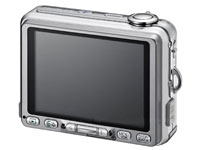 These include a shooting game, blockbuster and a maze puzzle, played via the camera’s controls which have been positioned like a console for extra playability.
These include a shooting game, blockbuster and a maze puzzle, played via the camera’s controls which have been positioned like a console for extra playability.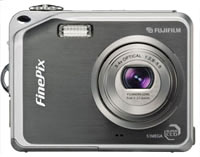 Although we’ve never felt the urge to play a shoot ’em up on our digital cameras, the rest of the camera seems to shape up pretty well, with the FinePix V10 Zoom sporting a large three inch, 230,000 pixels LCD screen in a pocketable design.
Although we’ve never felt the urge to play a shoot ’em up on our digital cameras, the rest of the camera seems to shape up pretty well, with the FinePix V10 Zoom sporting a large three inch, 230,000 pixels LCD screen in a pocketable design.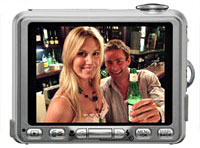 The camera boasts Fujifilm’s excellent Super CCD HR sensor, with their Real Photo Technology offering a huge range of sensitivity from ISO64 to ISO1600, making the camera suitable for low light, ‘natural’ photography.
The camera boasts Fujifilm’s excellent Super CCD HR sensor, with their Real Photo Technology offering a huge range of sensitivity from ISO64 to ISO1600, making the camera suitable for low light, ‘natural’ photography.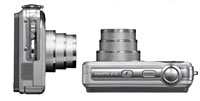 Sadly, Fujifilm are sticking with their rather obscure xD-Picture Card, which means that most photographers switching brands will have to invest in a new memory card format.
Sadly, Fujifilm are sticking with their rather obscure xD-Picture Card, which means that most photographers switching brands will have to invest in a new memory card format.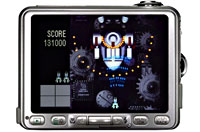 We’re not so convinced of the wisdom of bolting on arcade games on to a camera though – not only does it seem an unconvincing example of digital convergence, it’s also likely to result in a dead camera battery.
We’re not so convinced of the wisdom of bolting on arcade games on to a camera though – not only does it seem an unconvincing example of digital convergence, it’s also likely to result in a dead camera battery. Eastman Kodak and Skype have announced the “latest innovation in digital storytelling”, Kodak Photo Voice, a new free online service that combines live voice and online photo sharing.
Eastman Kodak and Skype have announced the “latest innovation in digital storytelling”, Kodak Photo Voice, a new free online service that combines live voice and online photo sharing. “Today’s families and social networks are scattered around the globe. Staying connected through photo sharing remains an important element in maintaining closer personal relationships,” said Sandra Morris, general manager of Consumer Imaging Services at Kodak.
“Today’s families and social networks are scattered around the globe. Staying connected through photo sharing remains an important element in maintaining closer personal relationships,” said Sandra Morris, general manager of Consumer Imaging Services at Kodak. Once a user has downloaded Kodak Photo Voice and Skype, they can select photos from a Kodak Easyshare Gallery album or from their computer, compile them into a Kodak Photo Voice presentation and “call” a friend over Skype to watch the slideshow live.
Once a user has downloaded Kodak Photo Voice and Skype, they can select photos from a Kodak Easyshare Gallery album or from their computer, compile them into a Kodak Photo Voice presentation and “call” a friend over Skype to watch the slideshow live. Currently in live beta, the KODAK Photo Voice is the first Skype certified “online photo sharing experience” (we’re currently enjoying a “live coffee drinking experience”, btw) and is available as a free download at
Currently in live beta, the KODAK Photo Voice is the first Skype certified “online photo sharing experience” (we’re currently enjoying a “live coffee drinking experience”, btw) and is available as a free download at 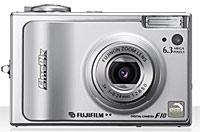 Best compact:
Best compact: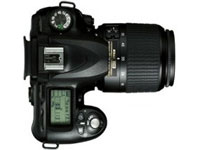 Best dSLR
Best dSLR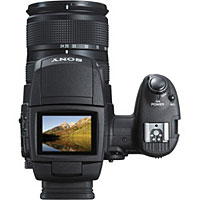 Sony Cyber-shot DSC-R1
Sony Cyber-shot DSC-R1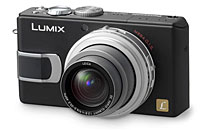 The Panasonic Lumix LX1
The Panasonic Lumix LX1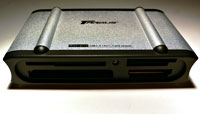 As your collection of digital devices grows, you’ll probably find it near-impossible to stick with just the one memory card format as the pesky things keep on changing.
As your collection of digital devices grows, you’ll probably find it near-impossible to stick with just the one memory card format as the pesky things keep on changing.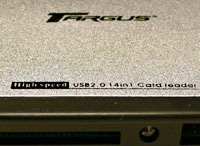 Getting data off these various cards usually means a trip to the back of the PC to install the various cables that came with all your camera/smartphone etc (when will they standardise all the ruddy USB connecters?!).
Getting data off these various cards usually means a trip to the back of the PC to install the various cables that came with all your camera/smartphone etc (when will they standardise all the ruddy USB connecters?!).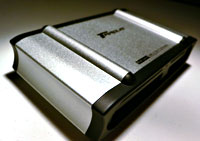 With most memory card readers offering support for a huge variety of memory cards, all you need to take on the road is a single USB lead to connect the card reader to your laptop and you’re sorted!
With most memory card readers offering support for a huge variety of memory cards, all you need to take on the road is a single USB lead to connect the card reader to your laptop and you’re sorted!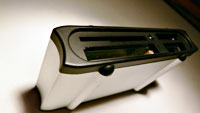 We were sadly guilty of leaving the charger for our Nikon N70 back in Blighty during out recent jaunt to NYC, and after seeing the battery levels accelerating downwards as we transferred zillions of images to our laptop, we shelled out for a cheap’n’cheerful Targus card reader, the TG-CRD14 ($25 street price).
We were sadly guilty of leaving the charger for our Nikon N70 back in Blighty during out recent jaunt to NYC, and after seeing the battery levels accelerating downwards as we transferred zillions of images to our laptop, we shelled out for a cheap’n’cheerful Targus card reader, the TG-CRD14 ($25 street price).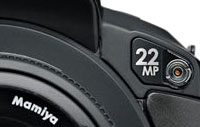 The long, long, long awaited Mamiya ZD medium format digital SLR is now available on pre-order in Japan, with UK delivery promised in January.
The long, long, long awaited Mamiya ZD medium format digital SLR is now available on pre-order in Japan, with UK delivery promised in January.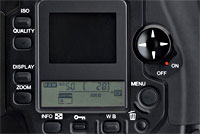 Inside the pixel-guzzling beast lies Mamiya’s exclusive 14bit A/D (analogue to digital) converter, enabling photographers to rattle off 12bit images at a nippy 1.5fps (up to 11 images).
Inside the pixel-guzzling beast lies Mamiya’s exclusive 14bit A/D (analogue to digital) converter, enabling photographers to rattle off 12bit images at a nippy 1.5fps (up to 11 images).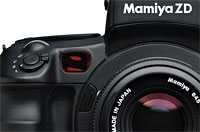 On the back of the camera, a 1.8in LCD offers image previews with a LCD window below displaying ISO and exposure information.
On the back of the camera, a 1.8in LCD offers image previews with a LCD window below displaying ISO and exposure information. The price is going to hover around an eye-watering €9200 – enormous wonga for some, but it’s the kind of figure that may finally tempt die-hard professional film photographers into the digital fold.
The price is going to hover around an eye-watering €9200 – enormous wonga for some, but it’s the kind of figure that may finally tempt die-hard professional film photographers into the digital fold. The camera is the first of a new generation of Fuji cameras sporting the new Super CCD HR sensor which – unlike previous models – doesn’t rely on interpolation jiggerypokery to deliver its 6.3 megapixel output.
The camera is the first of a new generation of Fuji cameras sporting the new Super CCD HR sensor which – unlike previous models – doesn’t rely on interpolation jiggerypokery to deliver its 6.3 megapixel output. We can’t count as fast as that, but it certainly proved to be one of the fastest compacts we’ve tested to date, with no perceivable delay after pressing the shutter button.
We can’t count as fast as that, but it certainly proved to be one of the fastest compacts we’ve tested to date, with no perceivable delay after pressing the shutter button.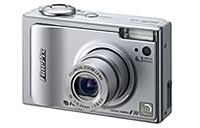 A handy LCD brightness boost switch helped compose shots in dim light, although we found it prudent to turn off the dazzling, kryptonite-like green focus beam which was so bright that you’d end up with pictures of people covering their eyes and screaming.
A handy LCD brightness boost switch helped compose shots in dim light, although we found it prudent to turn off the dazzling, kryptonite-like green focus beam which was so bright that you’d end up with pictures of people covering their eyes and screaming.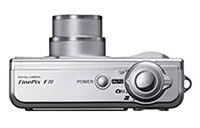 Out on the streets, the camera proved fast to start up, responsive, quick to focus and produced some excellent quality images, capturing impressively high levels of detail.
Out on the streets, the camera proved fast to start up, responsive, quick to focus and produced some excellent quality images, capturing impressively high levels of detail.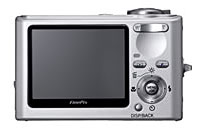 We remained impressed with the camera throughout the testing period, although some gripes surfaced: we found the lack of any real manual control frustrating at times and the less-than-intuitive menu system made some tasks unnecessarily fiddly.
We remained impressed with the camera throughout the testing period, although some gripes surfaced: we found the lack of any real manual control frustrating at times and the less-than-intuitive menu system made some tasks unnecessarily fiddly.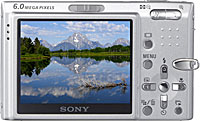 Sony continues to build on the success of its ultra-slim DSC-T digital still camera range with the release of the six megapixel Cyber-shot DSC-T9 model.
Sony continues to build on the success of its ultra-slim DSC-T digital still camera range with the release of the six megapixel Cyber-shot DSC-T9 model.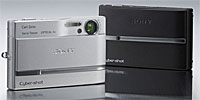 “Our T Series set the standard for slim, stylish, point-and-shoot cameras with fine image quality,” said James Neal, director of digital imaging products at Sony Electronics.
“Our T Series set the standard for slim, stylish, point-and-shoot cameras with fine image quality,” said James Neal, director of digital imaging products at Sony Electronics.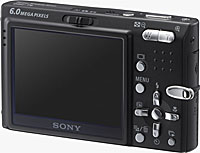 The DSC-T9 offers shutter speeds from 30 to 1/1000 second, Multi-pattern, Centre-weighted, or Spot metering, five white balance presets and 10 scene modes.
The DSC-T9 offers shutter speeds from 30 to 1/1000 second, Multi-pattern, Centre-weighted, or Spot metering, five white balance presets and 10 scene modes.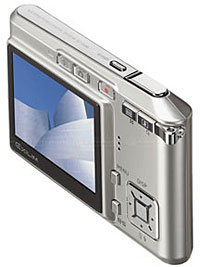 CASIO have announced their new, wafer-thin EXILIM CARD EX-S600 digital camera.
CASIO have announced their new, wafer-thin EXILIM CARD EX-S600 digital camera.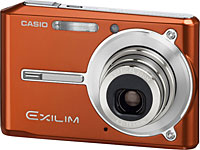 According to Casio’s announcement, Revive Shot mode “adjusts for obliquity as well as brightly refreshes faded colours.”
According to Casio’s announcement, Revive Shot mode “adjusts for obliquity as well as brightly refreshes faded colours.”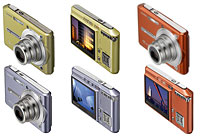 As is de rigeur on consumer compacts, there’s a built in movie mode with the Casio capturing MPEG-4, VGA (640×480 pixels) at 30 frames/second.
As is de rigeur on consumer compacts, there’s a built in movie mode with the Casio capturing MPEG-4, VGA (640×480 pixels) at 30 frames/second.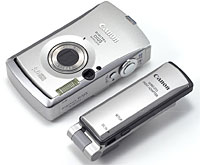 Canon are trumpeting that they are “bringing IXUS style and performance to the wireless age” with the release of their PowerShot camera.
Canon are trumpeting that they are “bringing IXUS style and performance to the wireless age” with the release of their PowerShot camera.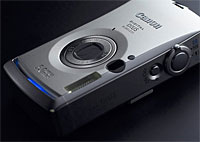 The camera can be registered with up to 8 target devices including wireless access points via a secure communication system to prevent eavesdropping or interception of your photographic masterpieces.
The camera can be registered with up to 8 target devices including wireless access points via a secure communication system to prevent eavesdropping or interception of your photographic masterpieces.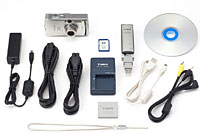 Although we naturally warm to the convenience and sheer ‘techiness’ of Wi-Fi enabled digital cameras, we remain to be convinced that the technology has reached maturity yet.
Although we naturally warm to the convenience and sheer ‘techiness’ of Wi-Fi enabled digital cameras, we remain to be convinced that the technology has reached maturity yet. We speak from some experience here too, after foolishly being seduced by Sony’s innovative – but frankly pointless – Bluetooth feature on its 20002 DSC FX77 camera.
We speak from some experience here too, after foolishly being seduced by Sony’s innovative – but frankly pointless – Bluetooth feature on its 20002 DSC FX77 camera.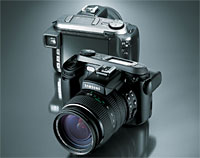 With the corporate might and phenomonal R&D budgets of Nikon and Canon continuing to create cameras that dominate the dSLR (digital Single Lens Reflex) market, smaller brands are discovering the benefits of pooling their resources to produce rival products.
With the corporate might and phenomonal R&D budgets of Nikon and Canon continuing to create cameras that dominate the dSLR (digital Single Lens Reflex) market, smaller brands are discovering the benefits of pooling their resources to produce rival products.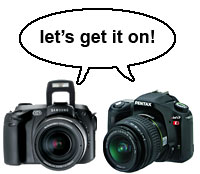 The partnership will draw on Samsung’s digital image processing technologies, brand recognition and digital convergence technologies while Pentax can offer an established dSLR brand with a huge range of interchangeable lenses. It can’t hurt that Samsung currently are one of the biggest players in LCD screens production.
The partnership will draw on Samsung’s digital image processing technologies, brand recognition and digital convergence technologies while Pentax can offer an established dSLR brand with a huge range of interchangeable lenses. It can’t hurt that Samsung currently are one of the biggest players in LCD screens production.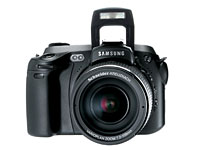 Samsung’s recent Pro815, an advanced prosumer compact digital camera, attracted praise for its innovation while Pentax’s *ist dSLR range has won many friends, although failing to match the popularity of rival Nikon and Canon products,
Samsung’s recent Pro815, an advanced prosumer compact digital camera, attracted praise for its innovation while Pentax’s *ist dSLR range has won many friends, although failing to match the popularity of rival Nikon and Canon products, Continued growth is predicted for the world-wide digital camera market, with pundits expecting the tally for 2005 to be around 82 million unit sales, soaring to 89 million in 2006.
Continued growth is predicted for the world-wide digital camera market, with pundits expecting the tally for 2005 to be around 82 million unit sales, soaring to 89 million in 2006.